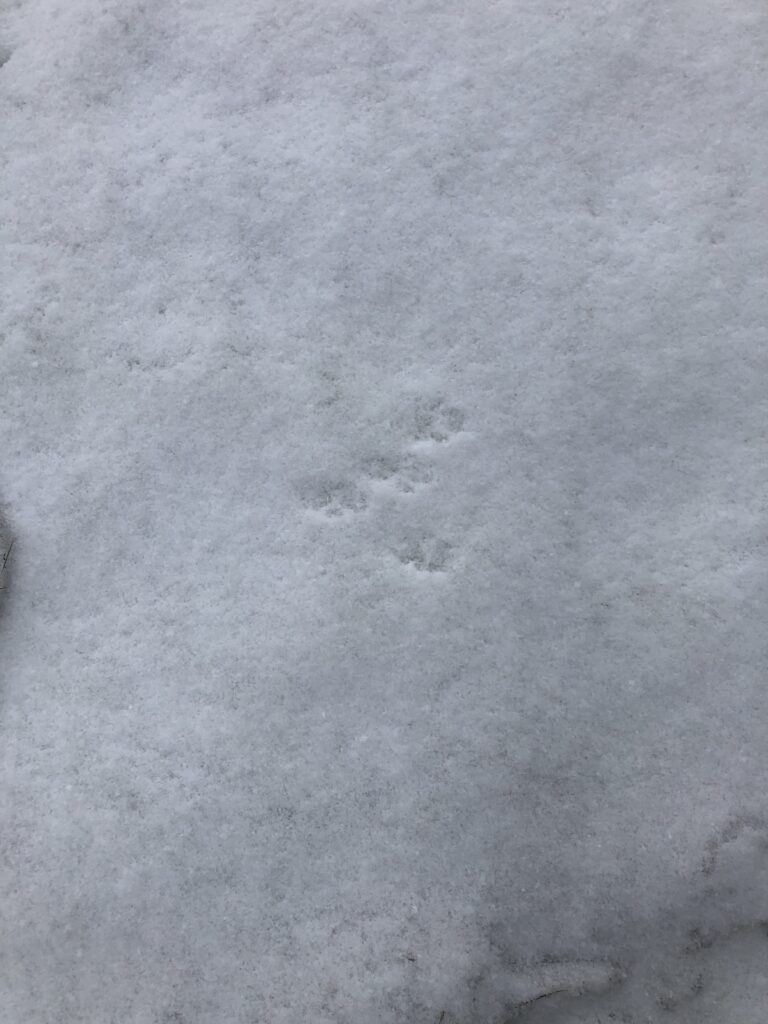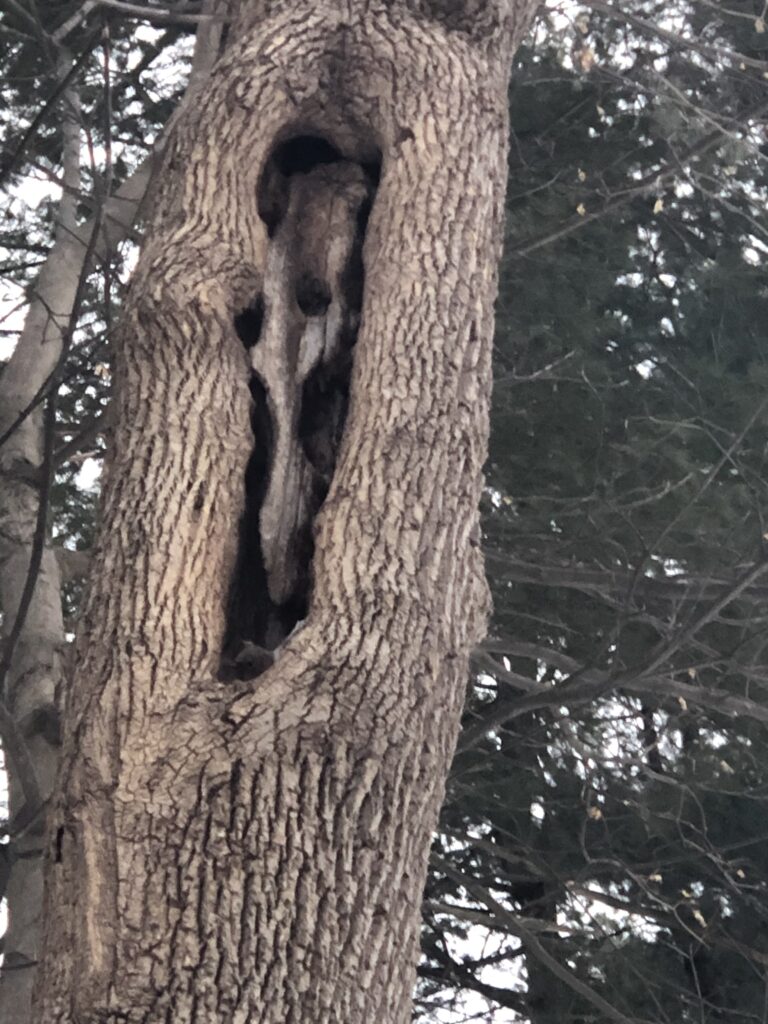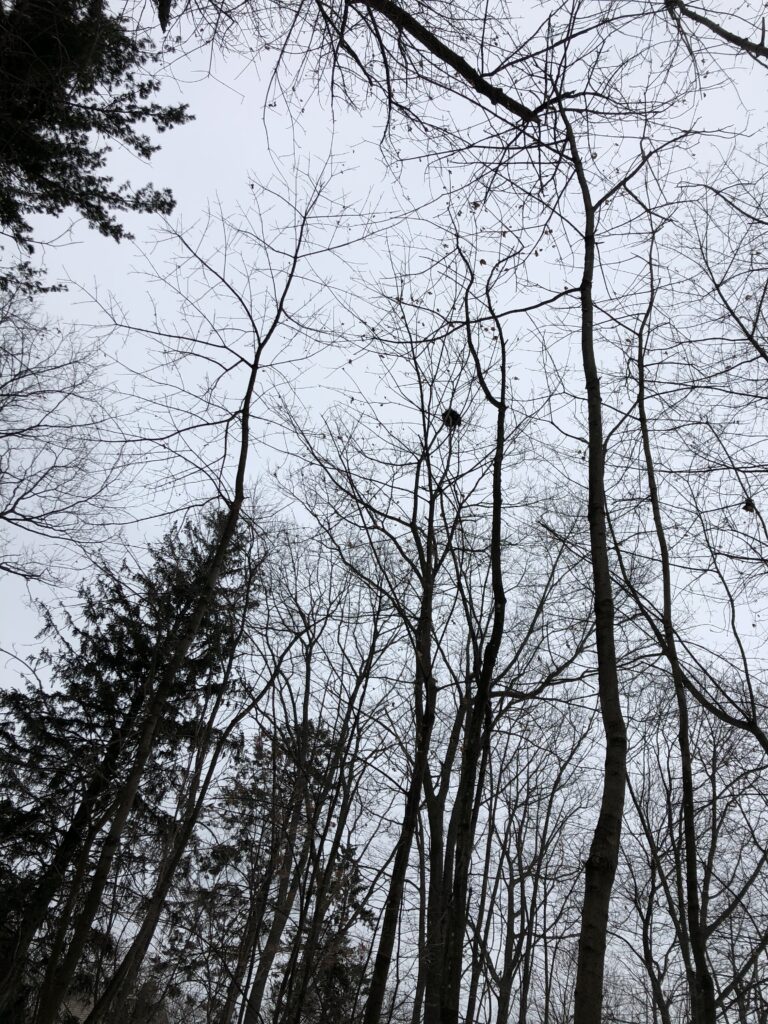Wildlife Activity:
On February 26, I observed signs of squirrels and domestic dogs. I saw tracks for both of these animals. I went to the Redstone Pines with a friend who actively birds, who helped me to identify the songs of three robins, one European starling, one white-breasted nuthatch, and one black-capped chickadee. In addition, there was a large murder of crows which I counted from a fixed spot in the horizon to be about 500 (some of them were too huddled and quick to get an accurate number).



SQUIRREL
One species of interest in the Redstone Pines is the gray squirrel (Figure 2, Figure 3). As mentioned before, I have seen gray squirrels scampering around the Redstone Pines. I have also found tracks of the squirrels (Figure 2). I have also seen the nests of gray squirrels (Figure 4). Gray squirrels are small mammals between the size of 5-36 inches (National Geographic KIDS 2020). During the winter, gray squirrels live in nooks of trees and nests in high branches of trees (National Geographic KIDS 2020). Gray squirrels hide nuts right before winter, so during the winter months they come to find the stashes they hid. During the night, they sleep (All Wildlife 2020). Their main predators are red fox and red-tailed foxes (National Geographic KIDS 2020).

Gray squirrels interact with Eastern White Pines as I have seen them scattering and climbing up these trees. They hide up in the trees and could potentially nest in these trees. I also saw tracks of a gray squirrel heading towards an Eastern Pine. To me, this indicates the use of Eastern Pines by gray squirrels. In addition, there is a red oak tree in the Redstone Pines. It is likely that the gray squirrels, as avid eaters of nuts and other tree reproductive structure, it is likely the some of the nuts that the gray squirrels are hiding and digging up are that of the Northern Red Oak acorns found in Redstone Pines. I also found evidence of little bits of nuts/acorns scattered on the ground of the Redstone Pines.
Phenological Changes
As far as I could tell there have been few phenological changes since January. There are some conditions that have changed, however, that I would like to note. The amount of snow has significantly decreased, mostly through melting and warmer temperatures. Under a thin layer of fresh snow (from the day of), there was merely a layer of ice. I also noticed there were some pine needles and pine cones around from the Eastern White Pines.

References
All Wildlife. (2020). Do squirrels run around at night? Retrieved from https://www.allwildlife.ca/blog/do-squirrels-run-around-at-night/#.
Dani Berger. (2020). Field notes for February.
Dani Berger. (2020). Squirrel in a Tree.
Dani Berger. (2020). Squirrel nest in tree.
Dani Berger. (2020). Winter Tracks.
Dani Berger. (2020). Winter Tracks Pt. 2.
National Geographic KIDS. (2020). Eastern gray squirrel. Retrieved from https://kids.nationalgeographic.com/animals/mammals/eastern-gray-squirrel/.
